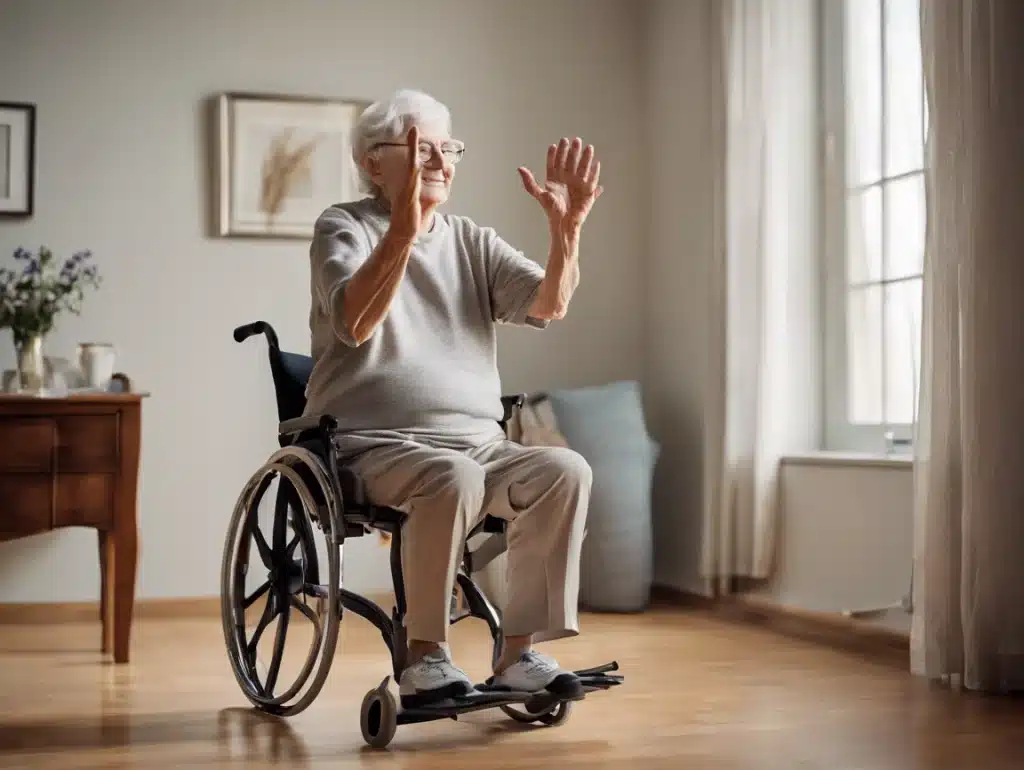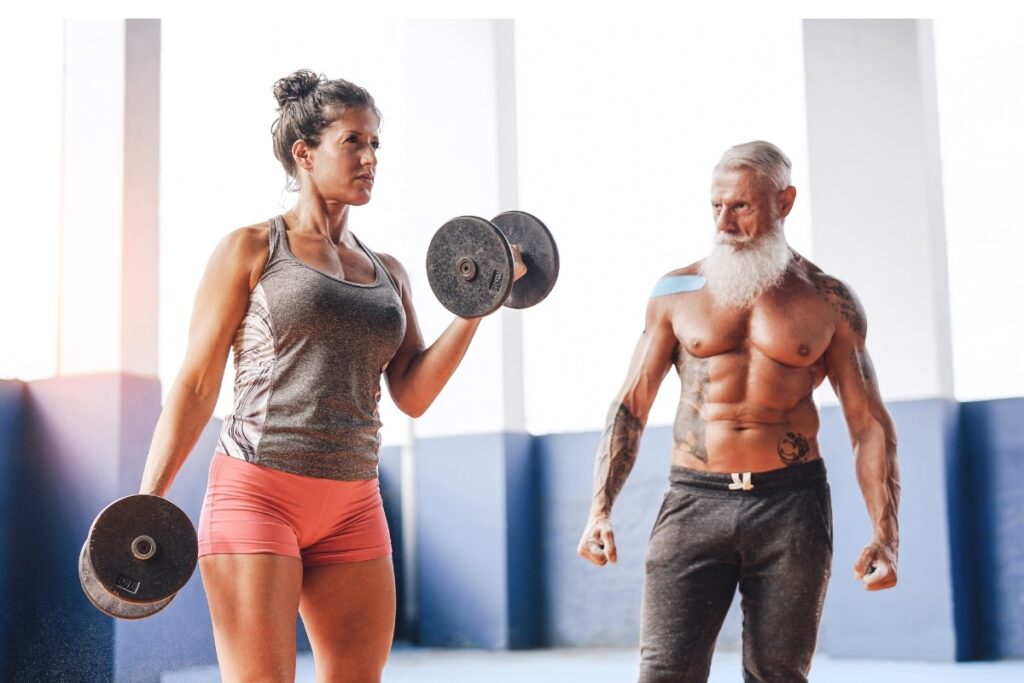Exercise is for everyone and, most importantly, elderly individuals. Physical activity allows individuals to become more independent, reduces the chances of developing chronic diseases, and improves mental well-being. Many seniors have limited mobility or do not have easy access to a gym or fitness center; they require exercise options at home. What can seniors do to remain healthy and active? This guide explains the role of exercise among seniors and the various ways to exercise in the comfort of one’s home. Furthermore, incorporating life care services can support older people with personalized fitness plans and resources. Learn how to lead an active lifestyle and improve your quality of life in your own home.
1. Why Physical Fitness is Crucial for Seniors
Negative and profound changes occur to our physical and mental health as we age, depending on different factors such as genes. Daily exercise is a force that can help to resist these actions. Employing consistent exercise in their daily lives can help seniors access several significant benefits that increase their quality of life.
First, they enhanced the seniors’ flexibility and ensured they could move around to do specific chores without falling, which is always a worry among seniors. This improvement in physical functions can redeem a patient’s independence and overall well-being. On top of this, movement increases the production of endorphins, which are known as the body’s natural antidepressants, therefore enhancing mental health among individuals.
Cardiovascular health is another area that receives an immense boost with regular exercise. Reducing the fat in the heart and increasing blood circulation lessen the possibility of acquiring diseases that put older people in peril. Weight-bearing exercises are crucial in preserving bone mass to avoid repeated osteoporosis fractures, help maintain mobility, and assist in managing weight-bearing disorders such as diabetes and hypertension common in old age. Engaging in physical exercises in senior citizens’ daily activities will enable them to live more actively, improving their general health.
2. Creating a Safe and Effective Home Exercise Routine
Developing a home exercise program is vital, especially if one intends to live an active life. Here are some essential tips to help you get started safely and effectively:
• Consult Your Doctor:
First, you must always consult your doctor, especially if you are in any of the outlined categories. They can give you recommendations according to your characteristics and assess any restrictions for the given situation, keeping you safe.
• Set Realistic Goals:
Set realistic targets to maintain your focus and interest in the work that you are doing. Start with brief and realistic movements that do not trigger your muscles’ pain and subsequent escalation of the regimen. It is an effective way of avoiding possible harm and sustaining gradual advancement.
• Choose a Variety of Exercises:
Include various exercises to help deal with several factors that can contribute to your health. Strength training will help to develop the muscles, while stretching helps to increase muscle flexibility. Periodic balance exercises help avoid falls and stabilize you, and cardiovascular exercises help the heart. They can contribute equally to your fitness by ensuring a diverse activity schedule.
• Listen to Your Body:
You should be aware of signs in your body when exercising. In case of any pain or discomfort, do not continue and modify the strategy. There is also a clear distinction between the average level of exertion during training and signals that could indicate a possible injury.
Following the above tips ensures you develop a safe and effective home exercise routine that meets your needs. Such an approach will assist you in maintaining an active life and enjoying the benefits of practicing physical activities.
3. Simple Exercises Seniors Can Do at Home
Exercise can be an integral part of home life. Understanding that you can work out comfortably at home without spending much money on equipment. Here are some general easy exercises a senior citizen can practice comfortably and safely at home:
• Chair Exercises:
Chair exercises suit elderly patients with weak lower limbs, as the chair supports different movements. Seated marching involves sitting on a solid chair, keeping the back erect while lifting each knee toward the chest alternately; this exercise is helpful for the lower part of the body and cardiovascular system. The other good exercise is the seated leg lift, which involves sitting on a chair, lifting one leg while seated, holding the position, and then putting it back down. This exercise helps strengthen the quadriceps and increases flexibility, making it easier to handle daily activities.
• Balance Exercises:
Reduced balance increases the chances of falling; balance exercises can be conducted at home using a chair. Heel-to-toe walk is where the patient stands about ten inches away from a wall or chair, steps forward with the heel of one foot precisely in front of the toe of the other foot, and then announces the tempo by walking straight ahead to enhance balance and coordination. Such exercises, as taken in single-leg stand, where one stands behind a chair, lifts the foot off the ground, and holds the position for as long as you can before swapping legs, strengthen your leg muscles and improve balance, thus helping to minimize falls.
• Strength Training:
Weight lifting assists in forging muscles and strengthening bones; you can use water bottles or soup cans as weights. This involves using a barbell or other weight in each hand, either seated or standing, with the arms relaxed at the sides, and then bending the arms at the elbows to curl the bar up towards the shoulders, exercising the bicep and forearm muscles. The wall push-ups involve standing with your back facing a wall, leaning on a wall, flexing your elbows, and pushing your upper body against the wall, which strengthens your chest, shoulder, and triceps using gravity without requiring equipment.
• Flexibility Exercises:
This is why flexibility is always necessary to minimize the chance of injury and enhance the freedom of movement. The seated forward bend, in which a person sits on the front part of a chair and then, from the knees and hips, flexes forward to try to touch the toes with the hands, stretches the lower back and hamstrings. Sitting or standing with one arm raised and reaching up to the head helps increase shoulder and side flexibility as well as make various movements more accessible to perform.
By engaging in those few simple exercises described above, seniors can carry out their daily routines, thus improving their health status and allowing them to remain healthy at home.
4. Incorporating Physical Activity into Daily Routine
The critical concept or technique of using physical activity to improve your fitness strategy is customizing it as part of your daily routine. Begin with simple stretching in the morning when you wake up so that your muscles and joints are alert throughout the day. The following is one of the many exercises that could increase the flexibility level and decrease stiffness.
Perform routine daily household activities with more energy and movement than before. Activities like vacuuming, gardening, or washing the dishes also burn fats and keep the body moving instead of sitting down for hours. These activities maintain cleanliness in the home and benefit the body.
It can be as simple as taking 10-minute walks every 2 hours daily; it would make a massive difference to your heart health. Think about taking a quick walk in your living room hallway or the backyard of your home. Such brief movement intervals can accumulate over time, significantly affecting your overall conditioning.
Lastly, we should research different online exercise classes for older people. It is possible to find many platforms that provide courses for various exercises, including “Yoga, Pilates, as well as low-impact Aerobics.“ These sessions can be engaging and thus offer the required structure and motivation, which can help maintain your commitment to a fitness plan. This diversification of approach makes the uptake of physical activity as an essential part of life’s routine more enjoyable.
5. Staying Motivated and Consistent
Maintaining motivation and consistency when exercising is always challenging. Nonetheless, there are always guidelines to follow that make it easy. To keep this, you need to develop a workout schedule that will be diverse so that you will not get bored. Staying interested should also be achieved through various activities such as performing yoga in one instance, walking in another, and light strength training in another.
Therefore, long-term and short-term goals and objectives can help us to shape and know where and when we are getting it right. Reward yourself for minor accomplishments, for example, after and before completing certain weeks of exercise or realizing new personal best records. Incentives may also be helpful, including getting something you like or engaging in activities you enjoy, such as reading a new book or doing a new puzzle.
Another primary strategy is integrating technology into your schedule. Utilize fitness apps to monitor your calories, oversee your progress, remind you to exercise, and find ideas for exercising. Joining online groups also provides motivation, encouragement, and a sense of fellowship with like-minded people working out. Thus, using these techniques, you can learn how to keep motivated and obtain the value of physical activity in your daily routine.
6. The Role of Nutrition in Physical Fitness
It is essential to understand that to maintain good health and fitness, seniors must eat a balanced diet frequently. Nutrition requirements include foods that fuel the body for exercise as well as those that support overall health. To achieve this, include several nutrient-rich foods in your diet.
Staying hydrated is paramount; drinking enough water throughout the day helps maintain energy levels and supports bodily functions. Meals involving “fruits, vegetables, whole grains, lean proteins, and healthy fats” should be encouraged. This way, you receive all the necessary vitamins and minerals to maintain muscle performance, bones, and cardiovascular system.
As for precautions, do not forget about portion sizes. Eating is about regulating weight and avoiding overeating, which is vital for metabolic regulation and overall body composition. It is important to note that taking supplements may benefit some seniors. Always consult your healthcare provider about whether you require any other supplements, including “Calcium or Vitamin D,“ to improve bone health and body functioning. Consequently, seniors need to take charge of the nutritional value of their foods to help improve their physical fitness and quality of life.
7. Mental Health Benefits of Physical Activity
Exercise is good for an individual’s physical and mental well-being as it is essential to their mental health. Daily exercise offers several mental benefits that can improve the quality of life.
One of the most significant benefits of exercise is stress relief. It boosts the production of endorphins, which have “feel-good factors,” thus reducing tension and promoting relaxation. Also, other benefits that are associated with increased physical activity include better sleep. This means that engaging in some form of physical activity that involves continuous exercise makes a person more likely to sleep better at night and consequently have ample energy during the day.
Another part of the body that benefits from regular exercise is the brain’s cognitive area. Physical activity can enhance memory, attention, and processing speed, potentially slowing down the mental decline associated with aging. Also, physical activity can help as a tool to minimize the symptoms of depression and anxiety. Many people report increased well-being and optimistic views on life because of exercise.
The awareness of physical activity and its incorporation into seniors’ daily activities can enhance mental well-being and lead to a satisfying life.
8. Adapting Exercises for Different Abilities
It is vital to modify all forms of exercise relative to the individual’s fitness levels and their restrictions, if any. One crucial approach is leaning or using a chair, wall, or any hard furniture to support while doing some exercises. This serves the purpose of safety to avoid cases whereby a patient may fall or suffer an injury while moving around the house.
Another significant strategy is modifying movements. You can adjust the range of motion or the intensity of exercises to match your comfort and ability level. For example, if a full squat is too challenging, try a half squat or mimic sitting and standing on a chair to avoid straining your muscles at once.
Paying attention to your body, particularly the signals it is sending out needs to be respected; therefore, being able to take a break is essential. They should engage in more frequent and shorter exercises rather than concentrate strenuously in a more extended session to avoid injuries. This approach helps one to remain active during workouts while observing the body’s endurance level.
Consulting a physical therapist or a certified trainer is also recommended for exercise adjustments and guidance. They can help develop a fitness program that suits your needs, making sure you get the most out of your workouts while your body adapts to the exercises. Thus, by knowingly modifying movements, you may remain physically active according to your abilities.
Conclusion: Learn How to Maintain an Active Lifestyle at Home
This paper suggests seniors require physical activities to stay healthy, remain independent, and enjoy good lives. To start with an active lifestyle at home, try out different exercises you can do based on your capabilities and preferences. Some practical strategies include setting achievable objectives, maintaining motivation, and incorporating exercise into your lifestyle. Begin today and try to be as active as possible. You will notice the difference that exercise makes even to your mind. Start improving your life by taking the first step towards a brighter and healthier future. “As the old saying goes, The best time to start is now.“ Lose those extra pounds by getting active and utilizing every single day.




